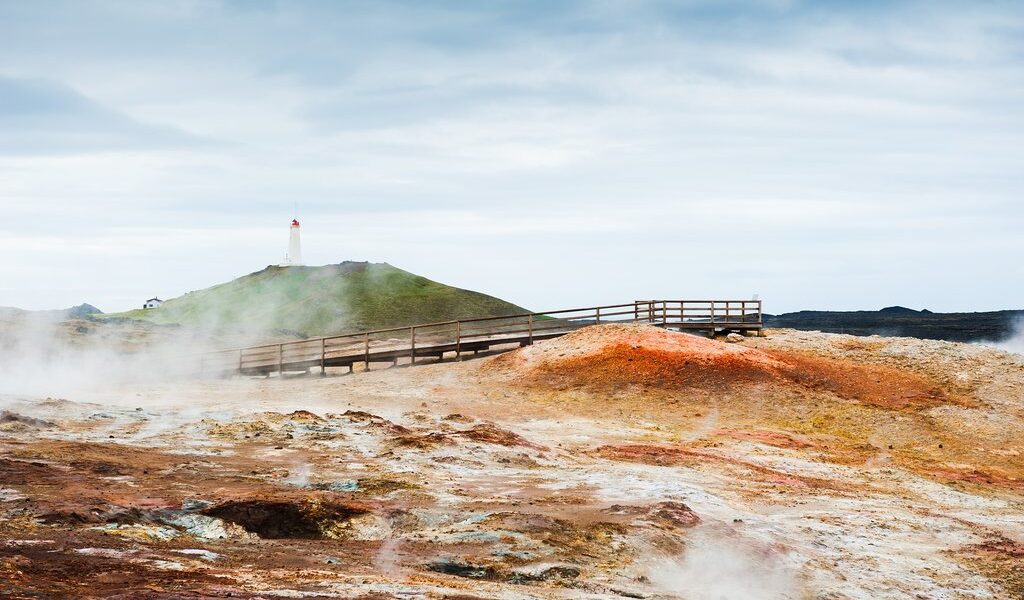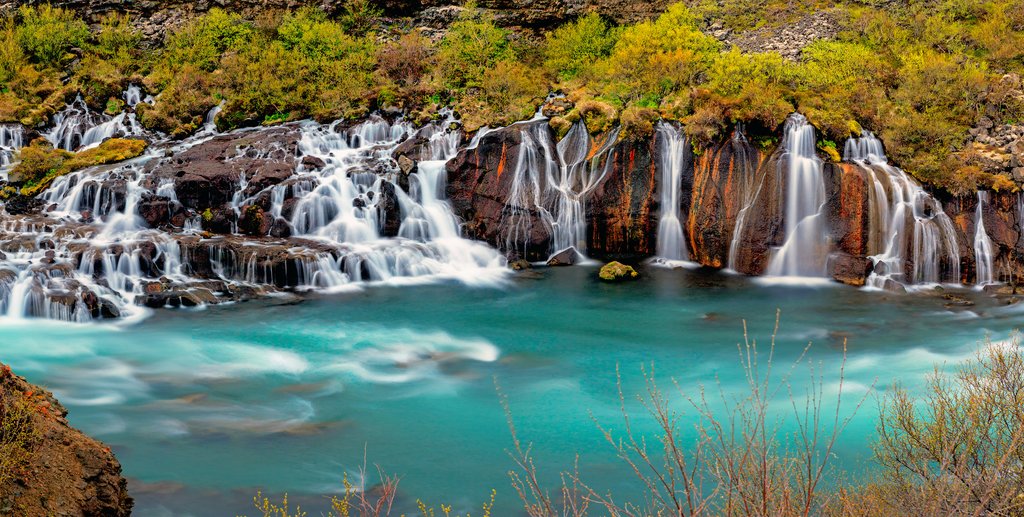
Iceland’s capital is ideally situated only a couple of hours from some of the country’s most beautiful natural sights, and there’s plenty to be seen in the span of a single day. Whether you drive the popular Golden Circle route or opt for the basalt columns and lava fields of the remote Snaefellsnes Peninsula, it won’t take you long to feel far from the city.
Overview
When you find yourself in the captivating city of Reykjavik, you’ll quickly discover that you’re never too far from a sight that will leave you utterly breathless. Iceland, though a relatively small nation within the European landscape – indeed, the entire country is only marginally larger than the state of Maine in the United States – boasts a unique advantage for visitors. Its manageable size translates into remarkably short drive times from its vibrant capital city to a seemingly endless array of natural wonders and captivating attractions.
This proximity makes the lively and culturally rich Reykjavik an exceptionally well-suited base for travelers who appreciate the comforts and conveniences of a metropolitan environment but also harbor a strong desire to explore the extraordinary natural beauty that Iceland is so renowned for. Imagine being able to easily transition from bustling city streets to serene landscapes in a matter of hours, offering a truly unparalleled travel experience.
For those travelers planning a visit during the winter months, Reykjavik proves to be particularly advantageous. Iceland’s weather is famously unpredictable, and having a secure and comfortable base in the city allows for greater flexibility in adjusting your itinerary at the last minute. Perhaps you need to alter your plans due to inclement conditions, or simply prefer to take refuge in the warmth and charm of the city if driving conditions become unfavorable. Consider this, though: the sun graces the sky for only approximately five hours each day in December, which significantly impacts the time available for day trips, especially when factoring in travel time.
Therefore, careful planning is essential. If you’re feeling unsure about which day trips would best suit your interests and time constraints, consider consulting with local travel specialists. These knowledgeable individuals can provide invaluable insights and guidance, helping you craft a personalized itinerary that maximizes your enjoyment and ensures you make the most of your precious time in Iceland. They can also provide information on alternative tours and activities if the weather turns and you want to experience something closer to Reykjavik.
1. Reykjanes Peninsula
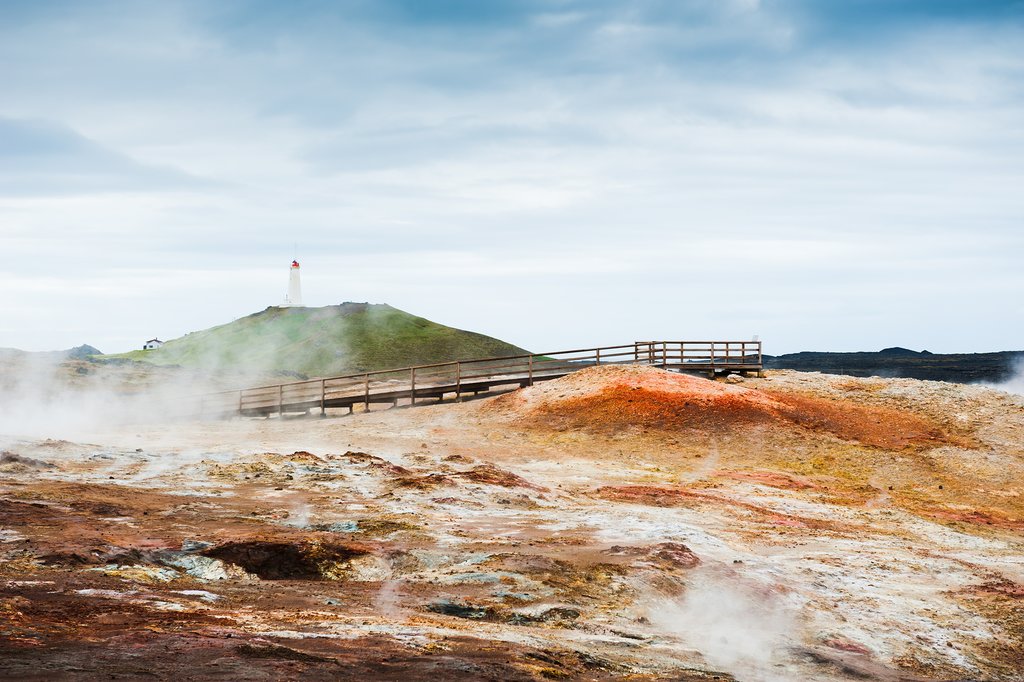
The Reykjanes Peninsula is, without a doubt, one of Iceland’s most criminally overlooked treasures, a region that deserves every single moment of your attention and exploration. This captivating peninsula offers an impressive microcosm of nearly every type of natural sight you’d expect to encounter throughout the entirety of Iceland, condensed into a relatively compact area. Prepare to be mesmerized by everything from the otherworldly, eerie landscapes of expansive lava fields to the bubbling, steaming energy of active mud pools and the awe-inspiring spectacle of powerful geysers erupting into the sky. It’s a geological wonderland waiting to be discovered.
Begin your day with a visit to the serene and picturesque Kleifarvatn Lake, nestled within the boundaries of the stunning Reykjanesfólkvangur National Park. This breathtaking body of water is the largest lake on the peninsula, and when coupled with the surrounding, dramatic volcanic terrain, it creates an undeniably Instagram-worthy landscape. Capture the surreal beauty of the stark volcanic rocks reflected in the still, dark waters of the lake – a memory you’ll cherish long after your trip is over.
The Gunnuhver geothermal area is another absolute must-see attraction on the Reykjanes Peninsula. Prepare to be captivated by the raw, untamed power of nature as you witness the bubbling mud pools, the plumes of steam rising from the earth, the fascinating craters formed by geothermal activity, and the stark beauty of the surrounding lava fields. The area features two ramps specifically designed for visitors to safely explore this dynamic landscape, allowing you to get up close and personal with the geothermal wonders while maintaining a safe distance from the most volatile areas.
Before indulging in a relaxing dip in the rejuvenating waters of the world-famous Blue Lagoon, take a moment to marvel at the sheer, unbridled power of the Atlantic Ocean as it crashes against the majestic Hafnarberg cliffs. This long, imposing wall of sea lava cliffs is a popular destination for hikers and bird watchers alike, offering stunning panoramic views of the coastline and the vast expanse of the ocean beyond. Listen to the roar of the waves as they pound against the cliffs, and keep an eye out for the diverse array of seabirds that call this dramatic landscape home.
Next, embark on a symbolic journey across continents by taking a walk on the Midlina Bridge in Sandvík. This unique footbridge, though short in length, holds immense significance, as it literally connects the Eurasian and North American tectonic plates, spanning the fissure that marks the boundary between these two massive landmasses. As you complete the 50-foot walk, be sure to commemorate your transcontinental journey by picking up your personalized certificate from the nearby Reykjanes Information Center, proudly declaring that you have indeed hopped between continents using what is also affectionately known as “Leif the Lucky Bridge,” named in honor of the renowned Icelandic explorer Leif Erikson.
Conclude your exploration of the Reykjanes Peninsula by venturing to its very tip, where you’ll find the iconic Garðskagi Lighthouse, located near the charming small fishing village of Garður. This is the tallest lighthouse in the entire country and is open to the public when the weather permits. Ascend to the top of the lighthouse and be rewarded with magnificent, sweeping sea views. If you’re particularly fortunate, you might even spot seals or dolphins frolicking in the waters near the shore, adding an extra layer of magic to your experience.
Seasonal Information: The weather in Iceland, particularly during the winter months, is known for its rapid and unpredictable changes. This can often lead to unexpected road closures, so it’s crucial to stay informed. Before embarking on your journey, be sure to consult updated road conditions. Additionally, it’s highly recommended that you download the 112 Iceland app onto your smartphone. This app stores your GPS location and, in the event of an emergency, makes it significantly easier for authorities to locate you and provide assistance.
Duration: 6-7 hours
Chat with a local specialist who can help organize your trip.
2. South Coast
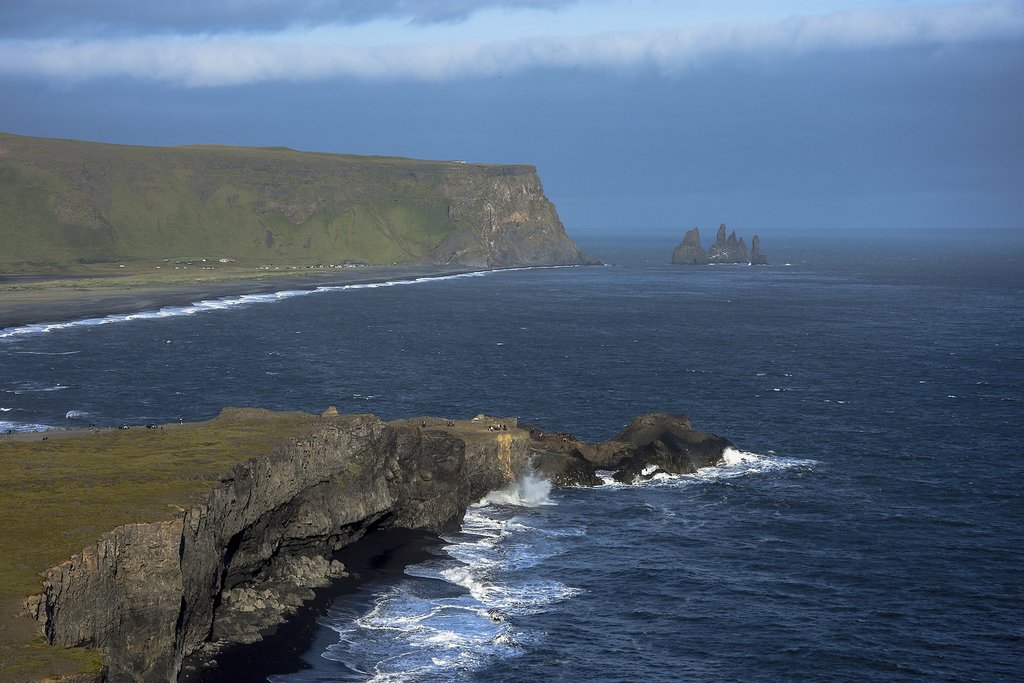
When it comes to experiencing the quintessential Icelandic sights, look no further than the breathtakingly scenic South Coast of Iceland. This iconic stretch of coastline is home to some of the country’s most famous and beloved natural attractions, promising an unforgettable journey through a land of fire and ice.
A visit to the South Coast simply isn’t complete without witnessing the awe-inspiring beauty of Seljalandsfoss – a majestic 65-meter-high waterfall that offers a truly unique and unforgettable experience: the opportunity to walk behind the cascading curtain of water. Feel the cool spray on your face as you venture behind the falls, capturing stunning photographs of the surrounding landscape framed by the shimmering water. And just a short distance away, you’ll find its slightly smaller but equally captivating counterpart, Skógafoss, another must-see waterfall located along the iconic Route 1. If the skies are clear and visibility is good, you should also be able to catch a glimpse of the snow-capped peaks of Eyjafjallajökull, an active volcano that famously erupted in 2010, disrupting air travel across Europe. Other notable highlights along Route 1 include the otherworldly landscapes of the Myrdalsjokull and Solheimajokull glaciers. It is important to note that these glaciers have been retreating at an alarming rate due to the effects of climate change, a stark reminder of the fragility of our planet’s natural wonders. The Solheimajokull glacier was also featured in the TV show Game of Thrones!.
No trip to the South Coast is truly complete without a stop at the charming small fishing village of Vik. After experiencing the rustic Icelandic village feel, spend some time at the world-renowned Reynisfjara black sand beach. Take in the dramatic views of the towering basalt columns and the crashing waves of the Atlantic Ocean, but be sure to exercise caution and maintain a safe distance from the water’s edge. Tragically, there have been instances of people being unexpectedly swept into the ocean by the powerful and unpredictable waves that characterize this coastline. If your schedule allows, consider making a stop at Sólheimasandur black sand beach as well. Be prepared for a 40-60 minute walk (each way) across the stark black sands to reach the now-iconic site of a crashed 1973 US Navy DC plane, a haunting and surreal spectacle that offers a unique photo opportunity.
Seasonal Information: While the South Coast offers a captivating experience year-round, it is highly recommended that you consider making your trip during the late fall or winter months. This will allow you to avoid the massive crowds of tourists that descend upon the area during the spring and summer seasons, when even finding a parking spot can become a challenge. Furthermore, witnessing Reynisfjara black sand beach blanketed in a pristine layer of snow in December is a truly unforgettable sight, adding an extra layer of magic and wonder to your experience.
Duration: 7 hours
3. Snaefellsnes Peninsula
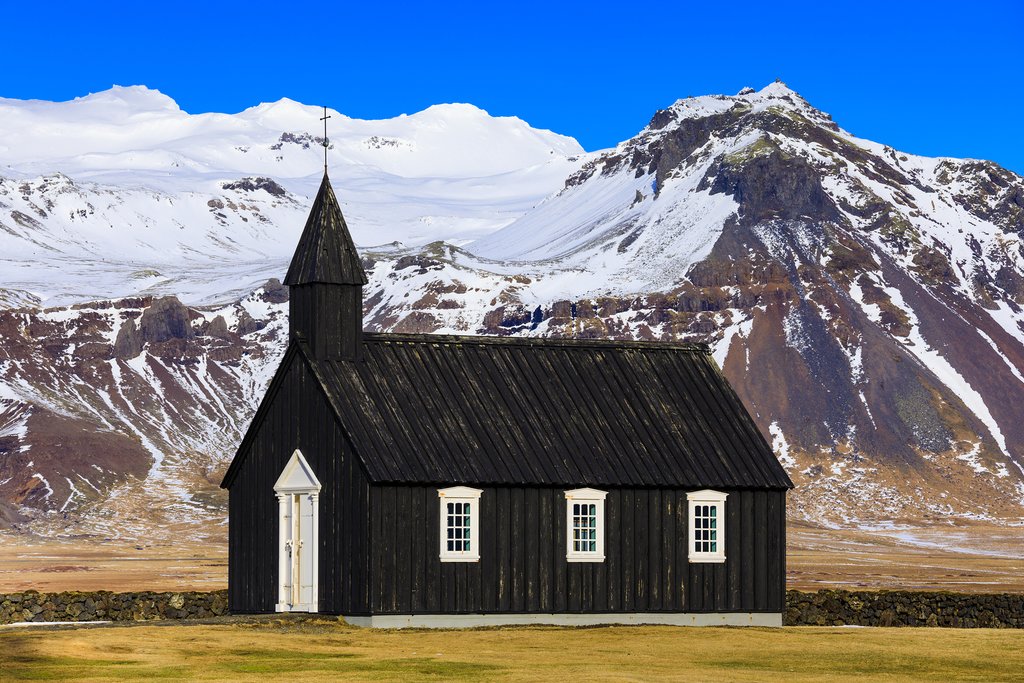
The Snaefellsnes Peninsula holds a special place in literary history, serving as the starting point for Jules Verne’s classic novel “Journey to the Center of the Earth.” It is here that the protagonist discovers the entrance to the earth’s core, and a day trip to this magical and enchanting part of Iceland will quickly reveal how it earned such a prominent spot in the realm of literature. The peninsula’s unique beauty and mystique are sure to captivate your imagination and leave a lasting impression.
Snaefellsnes is often affectionately referred to as “mini Iceland” due to the remarkable variety of natural sights and landscapes that can be found within its relatively small area. Prepare to be amazed by the diverse range of geological formations, dramatic coastlines, charming villages, and breathtaking views that await you around every corner.
Begin your exploration of the Snaefellsnes Peninsula with a visit to the impressive Gerduberg basalt columns. These hexagonal pillars, meticulously stacked next to one another to form a towering wall, are a testament to the power and artistry of nature. The geometric precision of the basalt columns creates a visually stunning spectacle that is sure to leave you in awe.
Even if churches are not typically high on your list of must-see attractions, you won’t want to miss the eerily beautiful Budakirkja, also known as the Black Church of Budir. This unique church is painted entirely black, giving it a distinctive and somewhat haunting appearance. It stands alone in a vast lava field, with the only other building in the vicinity being a hotel where you can relax and warm up with a cup of delicious hot chocolate. The stark contrast between the black church and the surrounding landscape creates a truly unforgettable visual experience.
Continue your journey westward towards Arnarstapi, a charming small fishing village that once served as an important trading post. Make a stop at Gatklettur, a curious rock formation that resembles a natural arch. Take some time to admire the intricate details of this geological wonder and capture some stunning photographs. You’ll also find an interesting sculpture made out of rocks, depicting Bardur Snaefellsas, the legendary protector of the peninsula who was believed to be half troll, half human.
Take a leisurely walk along the coastline to discover even more fascinating natural lava structures. If you have some extra time, consider embarking on a hike along the scenic coastal trail between Arnastapi and Hellnar—a 2.5-mile stretch that offers breathtaking sea views and the opportunity to immerse yourself in the raw beauty of the Icelandic coastline.
Your next stop should be Snaefellsjokull National Park, one of only three national parks in Iceland. This protected area is home to a majestic glacier, a dormant volcano, numerous caves, moss-covered lava fields, dramatic sea cliffs, and, of course, iconic black sand beaches. Some of the must-see highlights within the park include the Djúpalónssandur black sand beach, with its peculiar lava formations and smooth, colorful pebbles. While it may be tempting to take a few of these pebbles as souvenirs, remember that it is strictly forbidden to remove anything from the beach, as it is an important part of the park’s protected ecosystem. Another must-visit attraction in the area is Vatnshellir cave, an 8,000-year-old lava tube formed during a volcanic eruption. This is also the very spot where Jules Verne’s characters begin their extraordinary adventure in “Journey to the Center of the Earth.”
Finally, no visit to the Snaefellsnes Peninsula is truly complete without stopping at the breathtakingly gorgeous Kirkjufell mountain and waterfalls, located near the charming town of Grundarfjörður. This is likely the most photographed mountain in all of Iceland, a picture-perfect sight framed by the cascading waterfalls that flow nearby. Capture the iconic image of Kirkjufell mountain reflected in the still waters of the surrounding landscape, creating a memory that will last a lifetime.
Seasonal Information: Planning a day trip to the Snaefellsnes Peninsula during the winter months will always depend heavily on current road conditions. While under normal circumstances, the drive from Reykjavik shouldn’t take more than a couple of hours, it’s a completely different story when winter storms hit. You may need to shorten your trip and skip some of the sights, or even consider staying overnight on the peninsula to fully enjoy all that it has to offer.
Duration: 10 hours
4. West Iceland
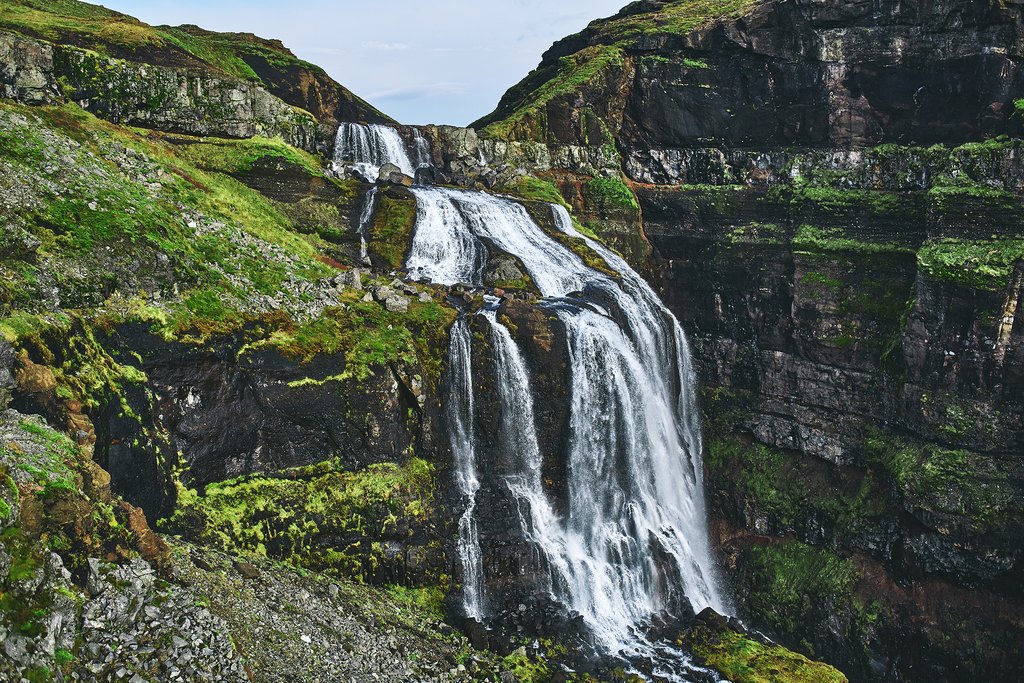
Begin your exploration of West Iceland in Borgarnes, a charming coastal town with a population of approximately 2,000 residents, located about an hour northwest of Reykjavik. Borgarnes serves as a great spot for tourists to stretch their legs and stock up on snacks and drinks for the rest of their journey.
While in Borgarnes, pay a visit to the Settlement Center, a small but fascinating museum that offers an engaging and informative exhibition on Iceland’s discovery by Norwegian Vikings and the reasons why they chose to settle in this remote and challenging land. Learn about the rich history and cultural heritage of Iceland’s earliest inhabitants.
If you’re looking to do some souvenir shopping, be sure to stop at Ljómalind Market, a delightful store that offers a wide selection of traditional Icelandic knitwear and handcrafted items created by talented local residents. Each piece comes with a card bearing the name of the person who knitted or crafted it, adding a personal touch to your purchase.
Next, head to the breathtakingly beautiful Hraunfossar, which translates to “lava waterfalls.” This unique and stunning waterfall system consists of countless creeks and cascades streaming out from underneath a vast lava field, creating a truly magical and unforgettable sight. The turquoise color of the water adds to the ethereal beauty of the landscape.
Even if you are not traveling with children, animal lovers will definitely want to make a pitstop at the Icelandic Goat Center Háafell, an organization dedicated to protecting this endangered (and incredibly friendly) species. The Icelandic goat is a rare breed with a rich history, and the center provides a safe haven for these animals while also educating visitors about their importance. This is a working farm that is home to not only goats, but also a variety of other animals, including horses, sheep, chickens, and other farmyard favorites.
Next up on your West Iceland adventure is a drive to Langjökull, the second largest glacier in Iceland. This is where you’ll find the renowned Into the Glacier tour, an extraordinary experience that takes you deep inside the majestic ice cap along a network of man-made tunnels. Explore the stunning ice formations and learn about the fascinating science of glaciers. The classic tour typically lasts about three to four hours, providing ample time to immerse yourself in this icy wonderland.
Conclude your day with a true highlight of the West Iceland region: the magnificent Glymur Falls. Since the falls are not visible directly from the road, you will need to embark on a hike of at least 15 minutes from the parking lot to reach the viewpoint. But the sight that awaits you is absolutely worth the effort. Glymur waterfall is the second highest waterfall in Iceland and is located within a beautiful, moss-covered canyon, creating a truly photogenic and unforgettable scene. Capture the cascading water as it plunges into the depths of the canyon below, surrounded by the lush green moss that clings to the surrounding rocks.
Seasonal Information: This is a day trip that can be enjoyed year-round as long as road conditions are favorable. However, since Hraunfossar is a popular tourist spot, you might want to consider avoiding the peak tourist season to enjoy a more peaceful and intimate experience.
Duration: 8 hours (longer if you opt to do the “Into the Glacier” tour)
5. The Golden Circle
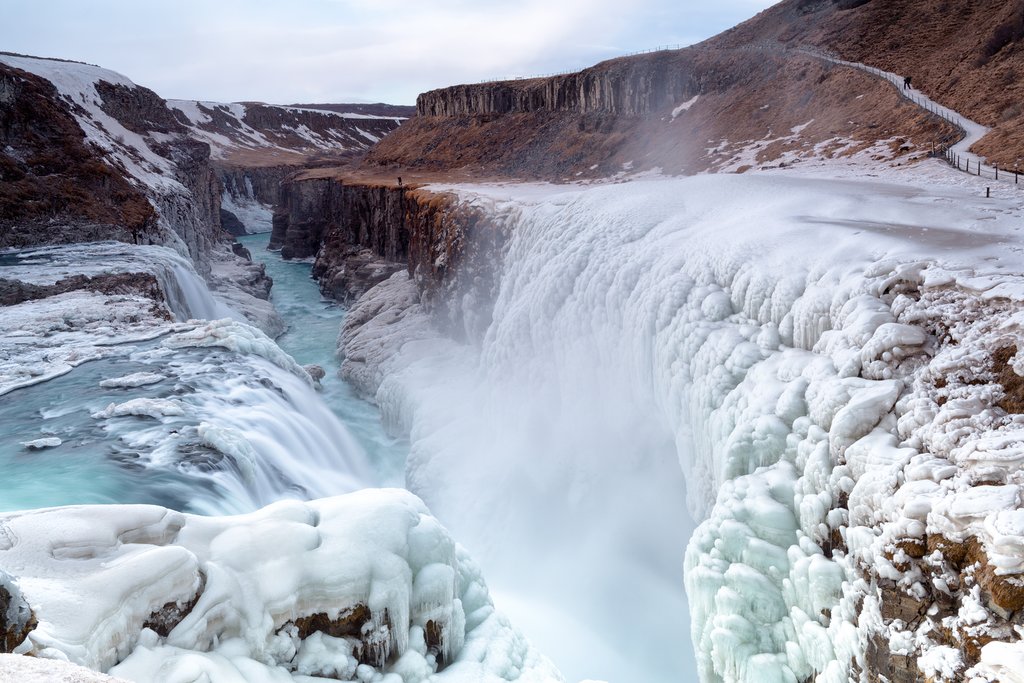
One of the most popular and highly recommended day trips from Reykjavik is the iconic Golden Circle. Its enduring popularity is well-deserved, as it offers visitors the opportunity to experience some of Iceland’s most stunning natural sights while also paying homage to the birthplace of the Icelandic nation. Prepare to be amazed by the geological wonders and historical landmarks that await you on this unforgettable journey.
Begin your Golden Circle adventure with a visit to the awe-inspiring Gullfoss waterfall, a magnificent three-step cascading section of the Hvita river that plunges into a 105-foot deep canyon. The sheer power and volume of the water as it thunders over the falls is a truly breathtaking spectacle. In the winter months, Gullfoss has been known to partially freeze, creating an unbelievably beautiful and surreal sight, with glistening ice formations clinging to the rocks and the surrounding landscape.
Ever wondered about the origin of the word “geyser”? It comes from Geysir, the largest geyser in the world, located in a geothermal area in South Iceland. While Geysir itself is mostly dormant these days, the true crown jewel of the area is the active Strokkur geyser, which erupts with impressive regularity, shooting a towering column of boiling water high into the air every few minutes. Prepare to be amazed by the raw power of nature as you witness this geothermal spectacle.
Conclude your Golden Circle tour with a visit to Thingvellir National Park, a UNESCO World Heritage Site of immense historical and geological significance. It is here that the Eurasian and North American tectonic plates meet, creating a dramatic rift valley that is a testament to the Earth’s powerful forces. More importantly, it was in Thingvellir that the national parliament of Iceland was established in 930 AD, marking the birth of the Icelandic nation and laying the foundation for its unique cultural and political identity. Explore the historic site of the Althingi, the ancient parliament, and learn about the rich history and cultural heritage of Iceland.
Seasonal Information: The Golden Circle sights are undeniably beautiful and captivating in both the summer and winter months, making them among the most visited places in the entire country. If you’re looking to avoid the large crowds of tourists, consider planning your visit during the shoulder seasons: October, November, or March through May. During these months, you’ll enjoy relative solitude and still have ample daylight to see all the sights on your list, allowing for a more peaceful and intimate experience.
Duration: 7 hours
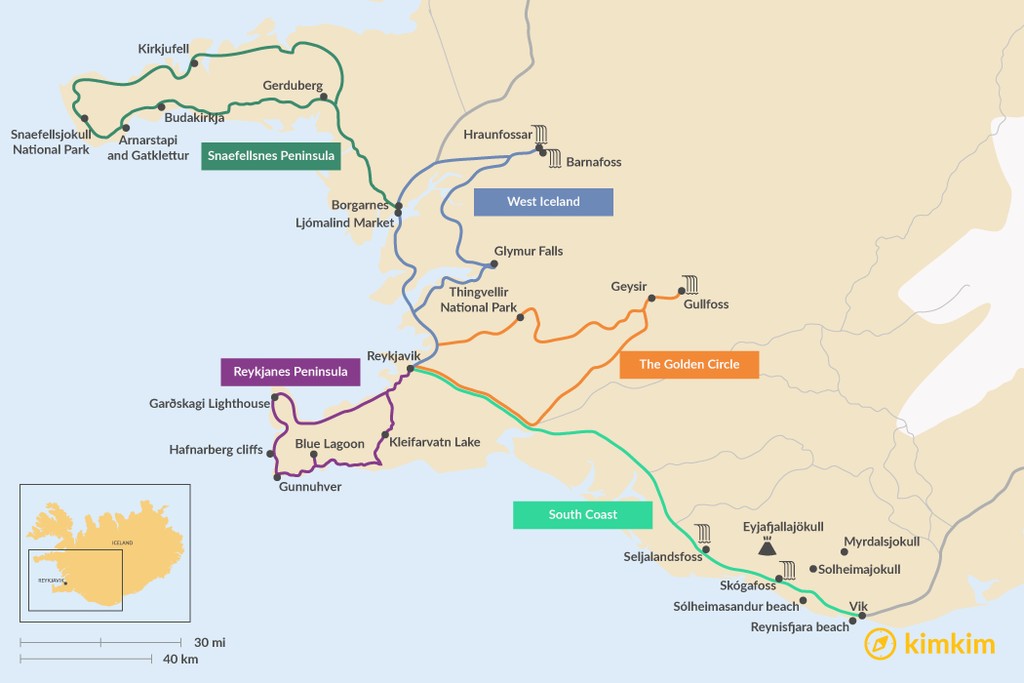
B-1148

